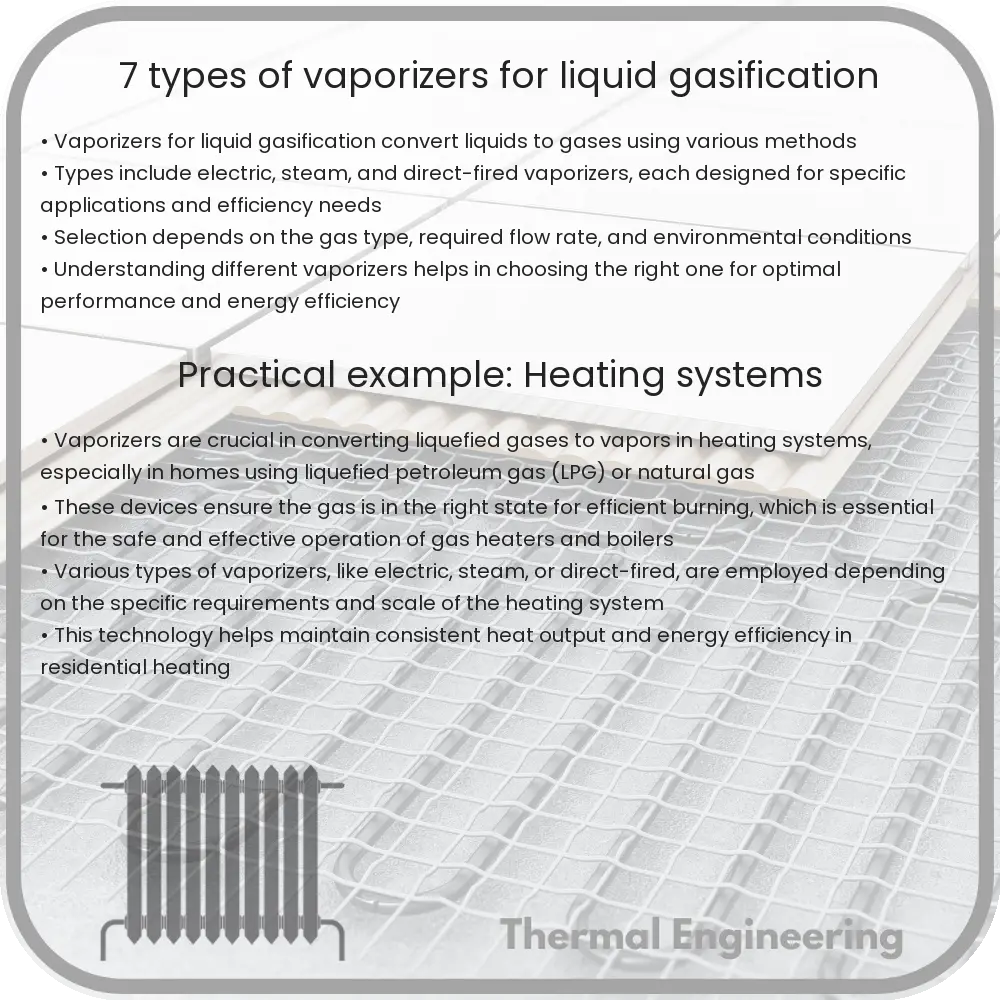Learn about vaporizers used in liquid gasification, their types, applications, and how they convert liquid gases like LNG into gas.

Introduction to Vaporizers in Liquid Gasification
Vaporizers are essential components in various industrial applications, playing a crucial role in converting liquid gases such as liquid nitrogen, oxygen, argon, and liquefied natural gas (LNG) into their gaseous forms. These devices are used in numerous fields including medical, industrial gas, and food industries. Understanding the different types of vaporizers can help in selecting the right one for specific applications.
Types of Vaporizers
There are several types of vaporizers, each designed to meet specific operational requirements and environmental conditions. Here are seven common types:
- Open Rack Vaporizers (ORVs): ORVs are commonly used in LNG regasification terminals. They utilize seawater as a heat source to vaporize the LNG. The warm seawater is sprayed over panels that contain the LNG, heating it and converting it into gas.
- Submerged Combustion Vaporizers (SCVs): SCVs are highly efficient and can handle large capacities. They work by burning a fuel source to heat water in a tank, and then the hot water heats the tubes filled with liquid gas, causing it to vaporize.
- Ambient Air Vaporizers (AAVs): These vaporizers use the ambient air to heat the cryogenic liquid. They are quite environmentally friendly as they do not require an external energy source, relying solely on atmospheric temperature and conditions to facilitate the vaporization process.
- Electric Vaporizers: Electric vaporizers use electric heat to warm the liquid gas. They provide a precise control over the temperature and are typically used when ambient conditions are too cold for AAVs to function effectively.
- Steam Vaporizers: Steam vaporizers use steam from an external source to heat and vaporize the liquid gas. They are suitable for situations requiring a fast response and high capacity output.
- Direct Fired Vaporizers: These are similar to SCVs but the liquid gas is heated directly by a flame rather than a water bath. This allows for higher thermal efficiency and quicker response time but requires careful handling due to the direct exposure to the flame.
- Plate Vaporizers: Plate vaporizers use a series of plates to conduct heat to the liquid gas. These are typically compact and efficient, making them suitable for applications where space is limited and efficiency is crucial.
Conclusion
Selecting the right type of vaporizer for liquid gasification depends on various factors including the specific type of liquid gas, the required gasification rate, environmental conditions, and available energy sources. Each type of vaporizer has its unique advantages and limitations, making them suitable for particular applications. Understanding these can help in optimizing performance and efficiency in industrial gas applications.